This article was medically reviewed by Mark Ziats, MD, PhD. Dr. Mark Ziats is an Internal Medicine Physician, Scientist, Entrepreneur, and the Medical Director of xBiotech. With over five years of experience, he specializes in biotechnology, genomics, and medical devices. He earned a Doctor of Medicine degree from Baylor College of Medicine, a Ph.D. in Genetics from the University of Cambridge, and a BS in Biochemistry and Chemistry from Clemson University. He also completed the INNoVATE Program in Biotechnology Entrepreneurship at The Johns Hopkins University - Carey Business School. Dr. Ziats is board certified by the American Board of Internal Medicine.
There are 13 references cited in this article, which can be found at the bottom of the page.
This article has been viewed 46,856 times.
When stomach discomfort hits, you want relief fast. Many things can give you a stomach ache, including being hung over, bacteria in food, viruses, indigestion and stress. While medications may help, they can also be expensive or have unwanted side effects. Eating certain foods can help soothe the stomach, while avoiding others will keep from aggravating your condition.
Steps
Eating When Your Stomach Hurts
-
1Don't eat while you’re actively vomiting or have diarrhea. Wait a while after you stop vomiting or have diarrhea before you try to eat any solid foods. Children should wait at least 6 hours after they stop vomiting before starting solid foods.[1] You can usually begin to add bland foods back to your diet the day after you have diarrhea.
- If nausea is a problem in keeping food down, make sure you can keep liquids down for a while before you try eating any solid food. First try "clear liquids," like chicken broth alone, then advance to "full liquids," such as chicken noodle soup or smoothies. Next, try soft foods like mashed potatoes, and then finally a full general diet.
- When you feel well enough to try solid food and nausea is no longer an issue, only eat easily digestible foods a little bit at a time throughout the day.
-
2Try the BRAT diet. The BRAT diet includes bland foods like bananas, rice, applesauce and toast.[2] These foods can absorb fluid, add stool bulk and tend not to stress your already sensitive stomach.
- Bananas can also help to replace some of the potassium that your body has lost from vomiting and/or diarrhea.[3]
Advertisement -
3Eat papaya. It is thought but not proven that papaya aids digestion and can help with constipation. It has enzymes that break down proteins, making them easier to digest. The tropical fruit may also promote a healthy environment in your stomach. You can try papaya extract pills if you can’t find the fruit readily available.[4]
-
4Use powdered, fresh or candied ginger. It's possible ginger may help with nausea, relax digestive muscles and aid discomfort. You can drink a cup of ginger tea, chew on fresh ginger, or eat a piece of candied ginger. Fresh ginger can be very intense so be careful when you first put some in your mouth.[5]
- The recommended limit for ginger intake is no more than 4 grams of ginger a day. You should start with 1 gram a day in divided doses every 4 hours, if needed.
-
5Chew on fennel seeds. Fennel is an anise-flavored herb that is often used for stomach complaints, although there is not enough scientific evidence to support this. [6]
-
6Try yogurt. For some people, a serving of plain yogurt with active cultures can be beneficial for an upset stomach. The active cultures in yogurt are a type of bacteria that live in your gut and help with digestion. Eating yogurt may increase the number of these good bacteria in your digestive tract.[7]
-
7Chew on mint for 20 minutes. This herb is popular for use after a large meal, usually in the form of mint candies. It's believed but not proven that peppermint, in particular, can help to settle your stomach and relax digestive muscles. It also tastes great and freshens breath.[8]
-
8Start to include other foods slowly. Once you have been able to eat the BRAT diet, try some other foods such as skinless chicken, soft fruits and vegetables and sherbet. Introduce new foods in small amounts over time. If you get sick again, go back to a liquid diet and wait until you feel better before introducing solids again.[9]
- Use smaller portion sizes when you first start incorporating food into your diet again, especially if you haven't eaten solid food in a few days. Sometimes it's not the food itself but an amount that the stomach isn't used to that can cause indigestion.
- You can usually resume your normal diet by 48 hours after vomiting or diarrhea.
Drinking Liquids For Upset Stomach
-
1Drink lots of water. It’s important to stay hydrated, especially if you are vomiting or have diarrhea. Water can also help flush out whatever is bothering your stomach. Be sure to drink your water slowly so it doesn’t also contribute to the problem.[10]
- If you have such bad nausea or vomiting that you are not only not able to eat food, but you also cannot keep down liquids, you need to go to the emergency room to be admitted to a hospital for IV fluids. You should receive IV fluids until you can tolerate liquids again.
-
2Sip tea. Drinking warm herbal tea can be very soothing to a sensitive digestive system. Peppermint, chamomile and ginger tea can all be effective for stomach upset. Try sipping a few cups of tea throughout the day to help with nausea, indigestion and stomach pain.[11]
-
3Drink clear broth. Clear liquids, such as chicken broth, can really help when your stomach is bothering you. They are easy to digest and will help keep you hydrated.
-
4Suck on ice chips. Sometimes swallowing can be difficult when you are very nauseated or vomiting. You still need to get liquids in you, though, as often as possible. Ice chips can be a good source of fluids because they melt slowly and can provide some cooling relief.
-
5Take Tums. If your upset stomach is caused by acid reflux, buy some Tums at a drug store and take the recommended amount. If this is a chronic problem, see a doctor. You may need a prescription medicine, such as an HH2 Blocker, famotidine, or a proton pump inhibitor (PPI), like omeprazole.
Avoiding Certain Foods
-
1Avoid drinking soda. Carbonization can contribute to gas—not something you want when you already have stomach discomfort. Additionally, soda often contains citric acid and sodium benzoate. These chemicals can bother a sensitive stomach, so it’s best not to drink soda when you don’t feel well.[12]
-
2Stay away from chocolate and caffeine. These substances can really irritate your stomach and contribute to acid reflux along with loose stools. Chocolate may also contain milk or nuts which are not easy to digest for many people. It’s a good idea to stay away from chocolate and items with caffeine, such as coffee or energy drinks, when your stomach is upset.[13]
-
3Don’t eat greasy, fried or fatty foods. High fat foods can contribute to bloating and make you feel really full. Fatty foods include meats, soft cheeses and fried, oily foods like french fries. These foods will probably make you feel even worse, so don’t eat them when your stomach is upset.[14]
-
4Avoid high acid foods. Foods that contain a lot of acid like citrus and tomatoes can make acid reflex feel more intense, which may intensify your pain.[15] They can also be irritating to a stomach that is upset. Avoid things like spaghetti sauce, orange juice and other tomato products while your stomach hurts.
-
5Keep away from spicy or highly seasoned foods.[16] These foods can be irritating and contribute to nausea. However, if you are used to eating spicy foods, then eating them with an upset stomach might not cause as many problems for you than for someone who is not used to them. Just be careful when you start to eat spicy foods again that your stomach does not react negatively.
-
6Don’t drink alcohol. Alcohol can contribute to acids in your stomach. Additionally, alcohol is difficult to digest and metabolize and may really irritate your stomach. It is best for you and your stomach that you do not drink alcohol when your stomach hurts or you are already nauseated.[17]
Expert Q&A
-
QuestionNone of the advice seems to be helping. What should I do?
 Mark Ziats, MD, PhDDr. Mark Ziats is an Internal Medicine Physician, Scientist, Entrepreneur, and the Medical Director of xBiotech. With over five years of experience, he specializes in biotechnology, genomics, and medical devices. He earned a Doctor of Medicine degree from Baylor College of Medicine, a Ph.D. in Genetics from the University of Cambridge, and a BS in Biochemistry and Chemistry from Clemson University. He also completed the INNoVATE Program in Biotechnology Entrepreneurship at The Johns Hopkins University - Carey Business School. Dr. Ziats is board certified by the American Board of Internal Medicine.
Mark Ziats, MD, PhDDr. Mark Ziats is an Internal Medicine Physician, Scientist, Entrepreneur, and the Medical Director of xBiotech. With over five years of experience, he specializes in biotechnology, genomics, and medical devices. He earned a Doctor of Medicine degree from Baylor College of Medicine, a Ph.D. in Genetics from the University of Cambridge, and a BS in Biochemistry and Chemistry from Clemson University. He also completed the INNoVATE Program in Biotechnology Entrepreneurship at The Johns Hopkins University - Carey Business School. Dr. Ziats is board certified by the American Board of Internal Medicine.
Internal Medicine Physician If your stomach still hurts after trying different home remedies or if your pain is severe, then see a doctor right away. You may have a serious problem and need medical treatment to feel better.
If your stomach still hurts after trying different home remedies or if your pain is severe, then see a doctor right away. You may have a serious problem and need medical treatment to feel better.
Warnings
- If you your stomach hurts often over a long period of time, then you should discuss the problem with a medical provider.⧼thumbs_response⧽
- If you are in very severe pain, then you may need immediate medical care. Consult with a physician right away or go to the nearest emergency room.⧼thumbs_response⧽
References
- ↑ https://www.healthlinkbc.ca/health-topics/nausea-and-vomiting-age-12-and-older#hw-home-treatment
- ↑ https://medlineplus.gov/ency/article/002118.htm
- ↑ http://familydoctor.org/familydoctor/en/prevention-wellness/food-nutrition/weight-loss/brat-diet-recovering-from-an-upset-stomach.html
- ↑ https://medlineplus.gov/druginfo/natural/488.html
- ↑ https://www.mountsinai.org/health-library/herb/ginger
- ↑ https://www.drugs.com/npp/fennel.html
- ↑ https://www.health.harvard.edu/staying-healthy/your-complete-guide-to-choosing-a-yogurt-to-meet-your-needs
- ↑ https://www.mountsinai.org/health-library/herb/peppermint
- ↑ https://www.healthdirect.gov.au/nausea#treated
- ↑ https://www.nhs.uk/conditions/feeling-sick-nausea/
- ↑ https://www.healthdirect.gov.au/nausea#treated
- ↑ https://health.clevelandclinic.org/ginger-ale-and-saltine-crackers-5-ways-to-ease-stomach-pain-and-nausea/
- ↑ https://ufhealth.org/when-you-have-nausea-and-vomiting
- ↑ https://www.nhs.uk/conditions/feeling-sick-nausea/
- ↑ https://goaskalice.columbia.edu/answered-questions/which-foods-are-acidic
- ↑ https://ufhealth.org/when-you-have-nausea-and-vomiting
- ↑ https://health.clevelandclinic.org/ginger-ale-and-saltine-crackers-5-ways-to-ease-stomach-pain-and-nausea/
About This Article
You can settle an upset stomach by eating bland foods like bananas, rice, applesauce, and toast, since these foods are easy on the stomach and help prevent diarrhea. Additionally, if you’re nauseous, you might try eating foods with ginger, like candied ginger or ginger tea, which can help calm your upset stomach. While you wait for your stomach to feel better, make sure to drink plenty of water to stay hydrated, especially if you have vomited or had diarrhea. Additionally, you can try drinking chicken broth to help you stay hydrated while reintroducing electrolytes back into your body. To learn how to avoid foods that will upset your stomach, read more from our Medical co-author.
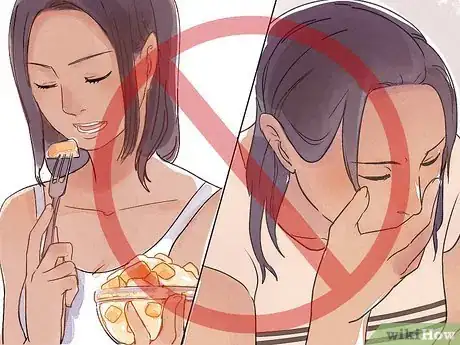
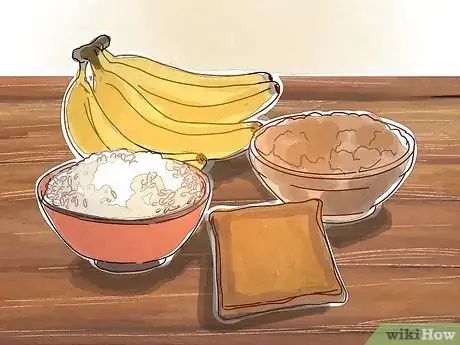


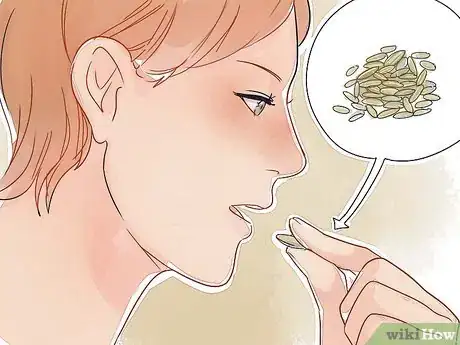

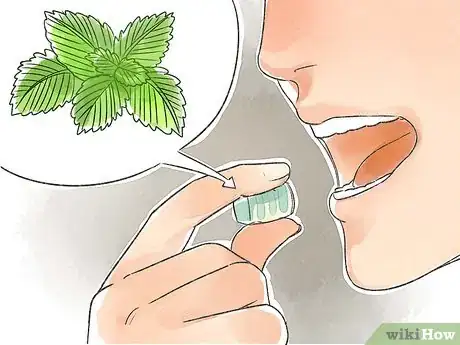



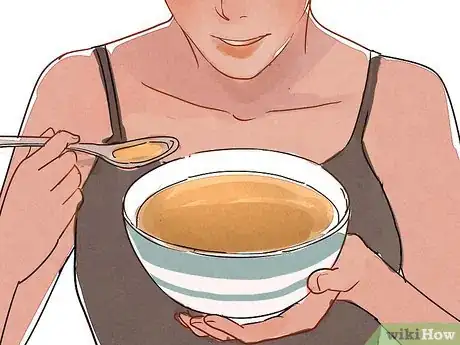

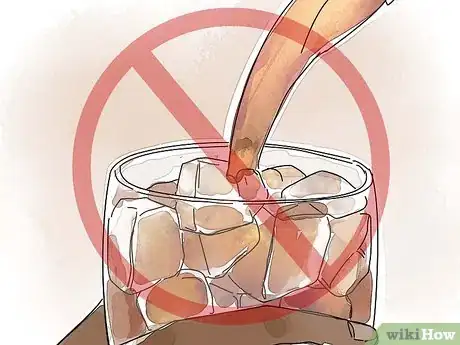

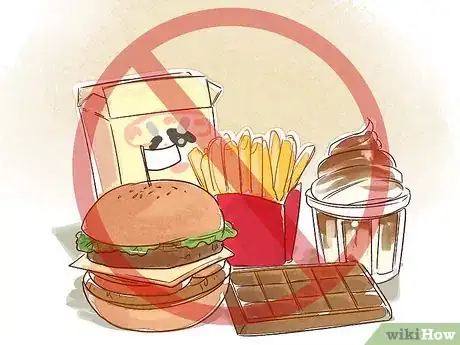
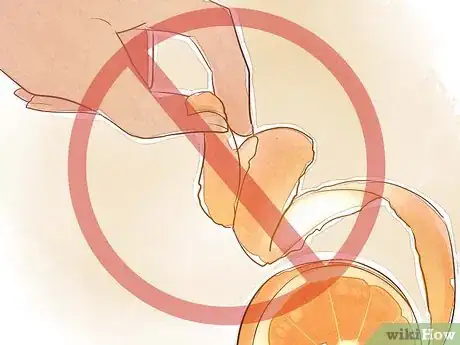
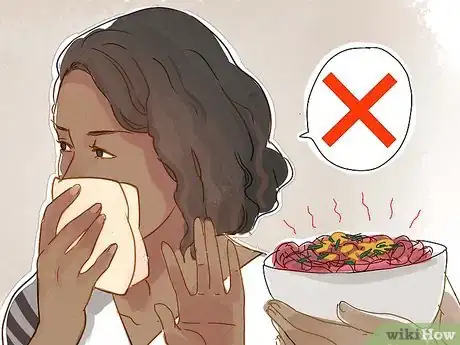





























































Medical Disclaimer
The content of this article is not intended to be a substitute for professional medical advice, examination, diagnosis, or treatment. You should always contact your doctor or other qualified healthcare professional before starting, changing, or stopping any kind of health treatment.
Read More...